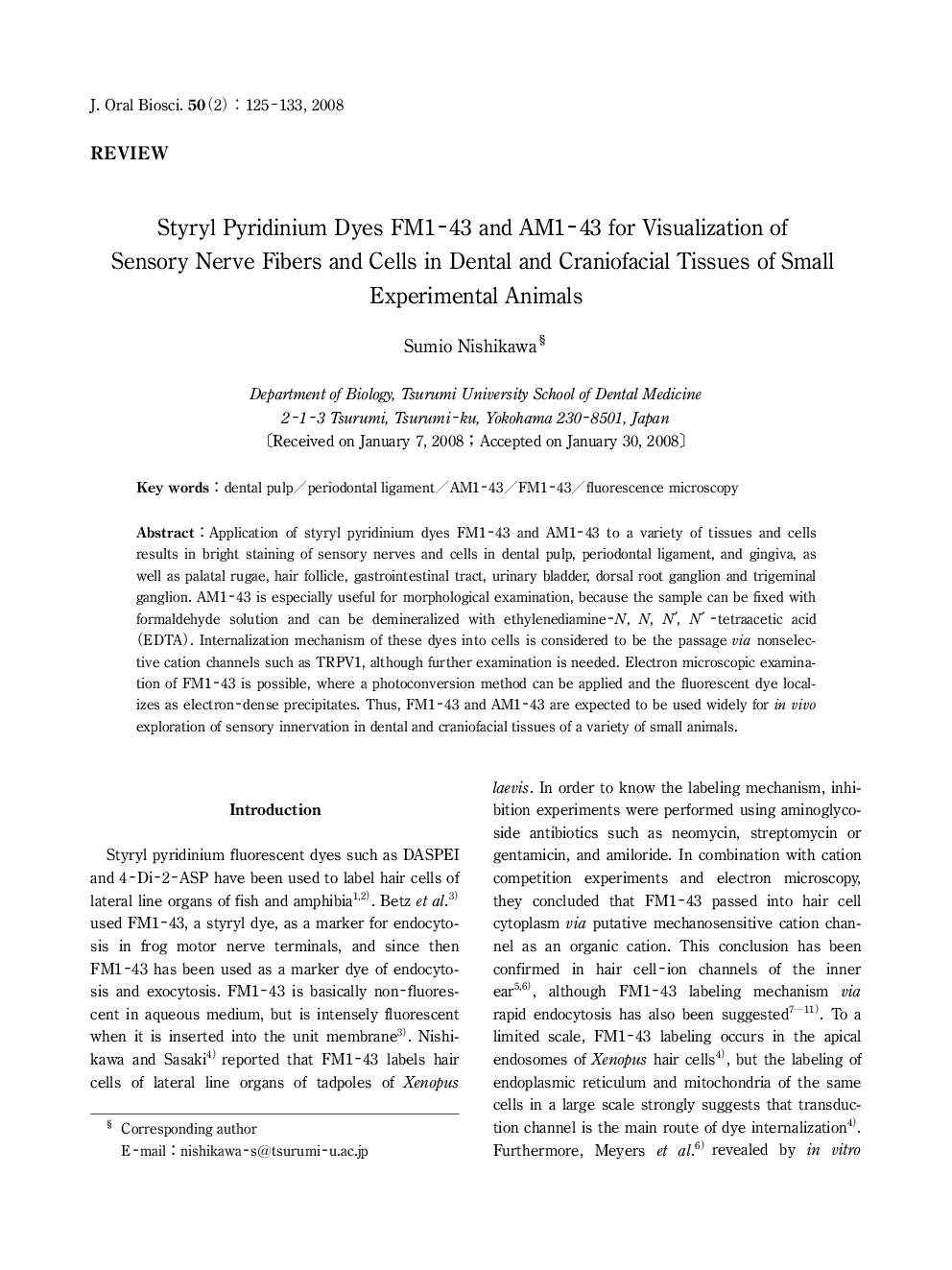| Article ID | Journal | Published Year | Pages | File Type |
|---|---|---|---|---|
| 2777061 | Journal of Oral Biosciences | 2008 | 9 Pages |
Application of styryl pyridinium dyes FM1-43 and AM1-43 to a variety of tissues and cells results in bright staining of sensory nerves and cells in dental pulp, periodontal ligament, and gingiva, as well as palatal rugae, hair follicle, gastrointestinal tract, urinary bladder, dorsal root ganglion and trigeminal ganglion. AM1-43 is especially useful for morphological examination, because the sample can be fixed with formaldehyde solution and can be demineralized with ethylenediamine-N, N, N', N' -tetraacetic acid (EDTA). Internalization mechanism of these dyes into cells is considered to be the passage via nonselective cation channels such as TRPV1, although further examination is needed. Electron microscopic examination of FM1-43 is possible, where a photoconversion method can be applied and the fluorescent dye localizes as electron-dense precipitates. Thus, FM1-43 and AM1-43 are expected to be used widely for in vivo exploration of sensory innervation in dental and craniofacial tissues of a variety of small animals.
